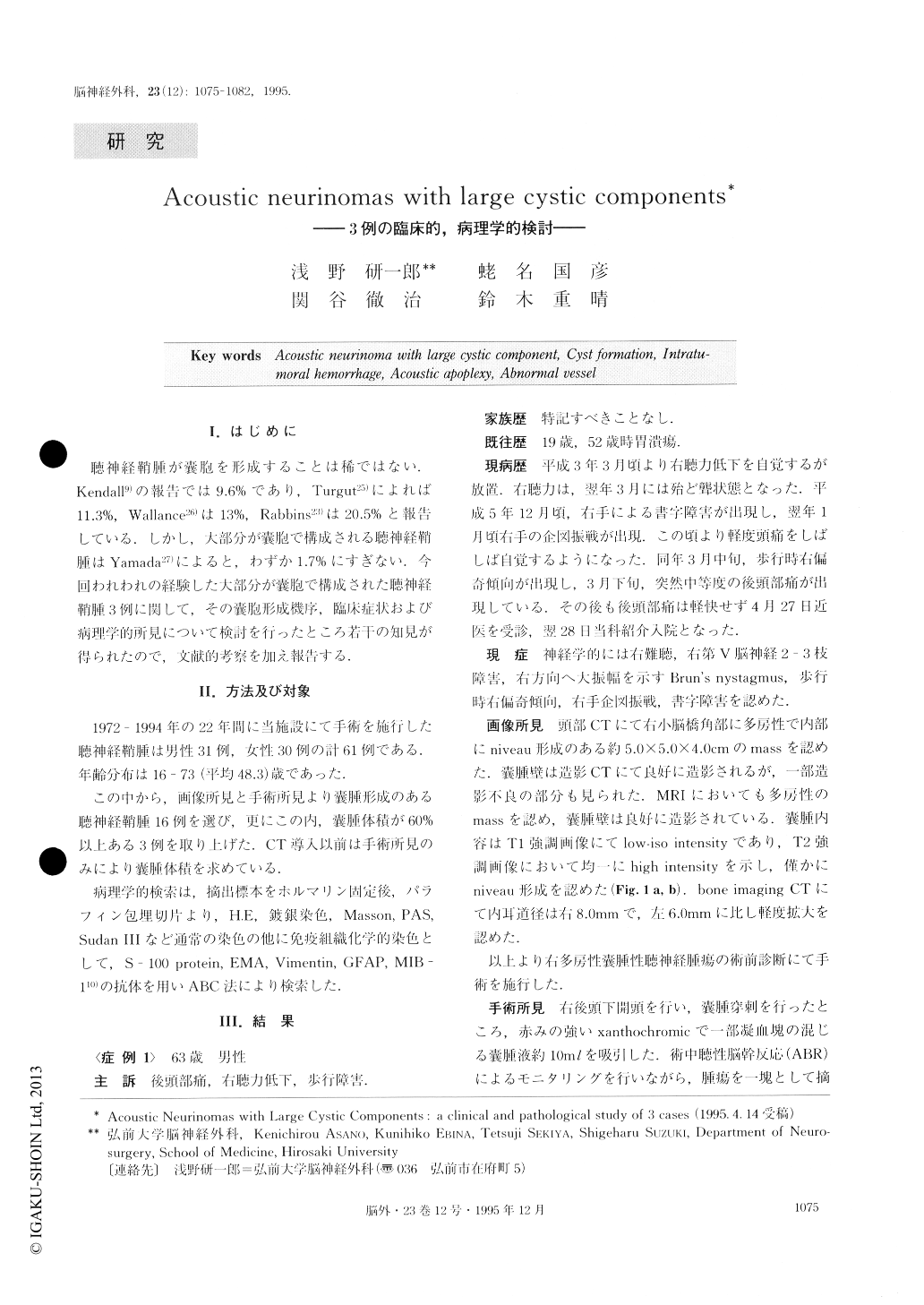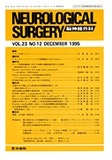Japanese
English
- 有料閲覧
- Abstract 文献概要
- 1ページ目 Look Inside
I.はじめに
聴神経鞘腫が嚢胞を形成することは稀ではない.Kendall9)の報告では9.6%であり,Turgut25)によれば11.3%,Wallance26)は13%,Rabbins23)は20.5%と報告している.しかし,大部分が嚢胞で構成される聴神経鞘腫はYamada27)によると,わずか1.7%にすぎない.今回われわれの経験した大部分が嚢胞で構成された聴神経鞘腫3例に関して,その嚢胞形成機序,臨床症状および病理学的所見について検討を行ったところ若干の知見が得られたので,文献的考察を加え報告する.
Acoustic neurinomas containing cystic parts are fair-ly common, but it is extremely rare for acoustic neuri-nomas to be mainly composed of cysts.
So far, we have encountered three such cases. We studied these cases retrospectively to correlate their characteristic clinical symptoms and their respective pathological findings. Referring to reviews of the re-levant literature and our three cases, we would like to discuss the possible mechanism of cyst formation and clinical symptoms. Compared with the patients with ordinary acoustic neurinomas, the patients in our three cases and in some cases in the literature have some distinct and possibly common clinical features. First of all, in spite of the cysts being large, hearing loss was less severe. Second-ly, sudden onset of headache and hearing loss were fre-quently experienced, probably due to intratumoral hemorrhages. Thirdly, intratumoral hemorrhages with niveau formations were frequently able to be identified on CT or MRI scannings. Histologically, our three cases revealed lots of abnormal sinusoid or telangiecta-sis vessels. Small hemorrhages, hemosiderin deposits and hemosiderin-containing phagocytes were also more abundant than in solid-type neurinomas.
The exact mechanism of the formation of these cysts is still controversial. Our hypotheses concerning the probable causes of cyst formation are presented in this study.
In our three cases, the most distinct finding was the presence of abundant abnormal sinusoid or telangiecta-sis-like vessels. We suggest therefore that, in these cases, repeated small hemorrhages from these abnormal vessels, along with subsequent intratumoral changes, are the most probable cause of the formation of these cysts.

Copyright © 1995, Igaku-Shoin Ltd. All rights reserved.


